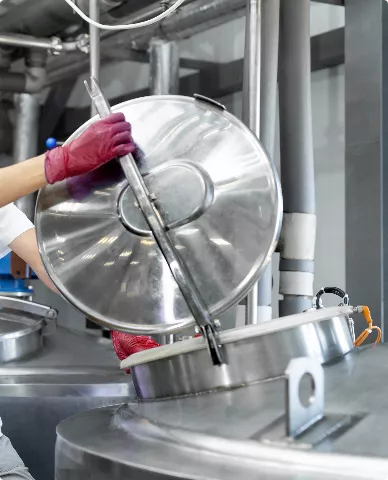Category 3 animal by-products
Category 3 animal by-products (Category 3 ABPs) represent the lowest risk and are often used in the production of livestock feed and pet food. PEPITO focuses specifically on Category 3 animal fat rendering, the result of which is high-quality processed animal fats and proteins.
What is included in Category 3 ABPs?
Category 3 includes materials that have a low risk and are safe for the production of pet food, livestock feed, biofuels, and other products:
- Parts of slaughtered animals: which are fit for human consumption, but not intended for it for commercial reasons.
- Animal by-products from food production: foods originally intended for human consumption that are no longer so intended.
- Products of animal origin: such as milk, milk-based products, and eggs, that are no longer intended for human consumption.
- Former food: food products of animal origin or containing products of animal origin that are no longer intended for human consumption for commercial reasons or due to defects that do not pose a risk to human health.
Processing and handling methods
Processing and handling of Category 3 materials of animal origin (ABPs) must follow strict procedures to ensure safety and regulatory compliance:
Collection and transport
- Special containers: Category 3 materials must be collected and transported in suitable and correctly labeled containers.
- Labeling: Each container must be clearly labeled for the relevant category of ABPs to prevent accidental misuse. In the European Union, containers transporting Category 3 animal by-products (ABPs) must be labeled in accordance with Regulation (EC) No. 1069/2009 and Commission Regulation (EU) No. 142/2011. According to these regulations, containers and vehicles for transporting Category 3 ABPs must be labeled with a visible and legible inscription “Not for human consumption” or “Not for human consumption – Category 3 animal by-products”. This labeling must be clearly visible and legible during the entire transport process to avoid confusion with products intended for human consumption.
Processing
- Processing method: PEPITO specializes in the rendering of Category 3 animal fats and their conversion into processed animal fats and processed animal proteins.
Uses of processed animal fats and proteins
| Industry | Use |
|---|---|
| Pet food | Provides essential nutrients and enhances palatability in formulations (commonly for dogs and cats). |
| Livestock feed | Used in feed to provide a rich source of protein. |
| Biofuels | Rendered fats can be processed into biodiesel, a renewable energy source. |
| Biogas production | Some by-products are used in the anaerobic digestion process to produce biogas as a sustainable energy source. |
| Cosmetics and pharmaceutical industry | Some by-products, such as rendered tallow or lard, are used in cosmetics and pharmaceuticals, where they serve as essential raw materials. |
Regulations and quality control
Ensuring the safety and quality of Category 3 animal by-products is crucial. The EU has established strict regulations for overseeing the production and use of these products:
- Traceability: All raw materials and final products must be traceable back to their origin.
- Hygiene standards: To prevent contamination during processing, the EU requires strict hygiene practices.
- Microbiological testing: Regular pathogen testing to ensure product safety.
- Compliance: Adherence to EU regulations governing the processing and use of Category 3 materials.
Environmental impact
Processing Category 3 materials significantly contributes to environmental sustainability – transforming by-products into valuable proteins and fats, reducing waste, and supporting the circular economy. These values align with the goals of PEPITO.










